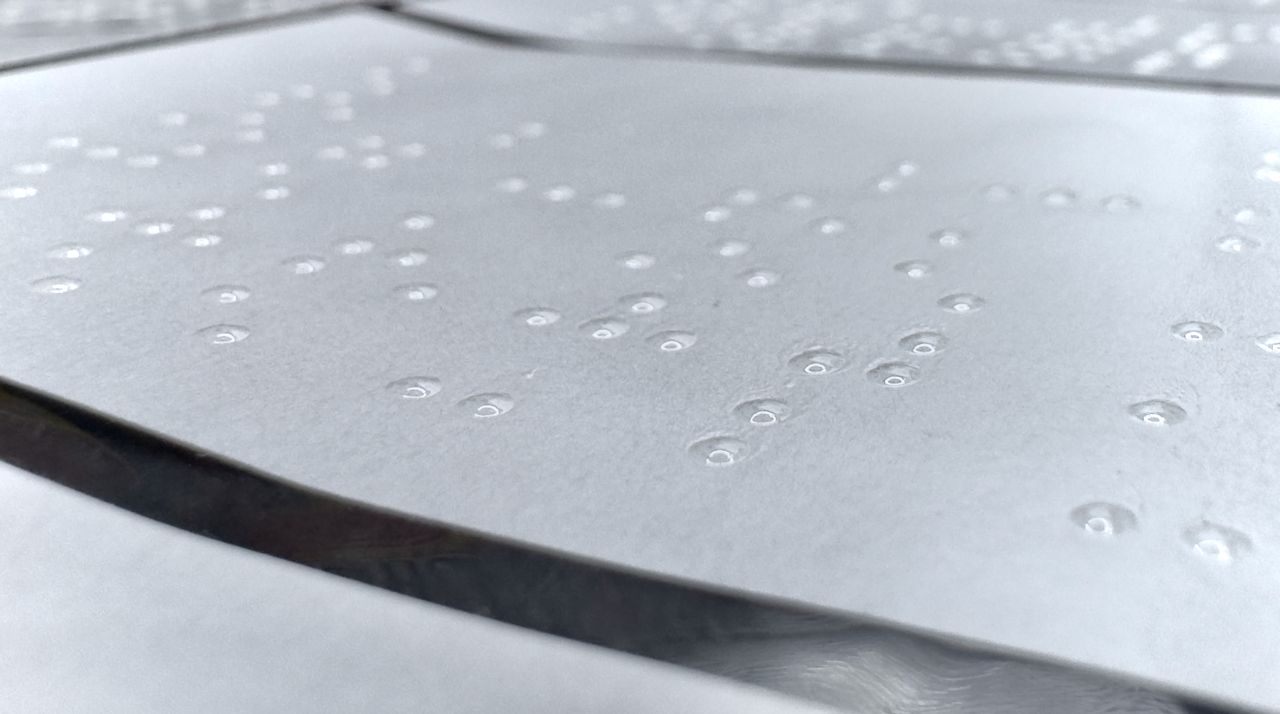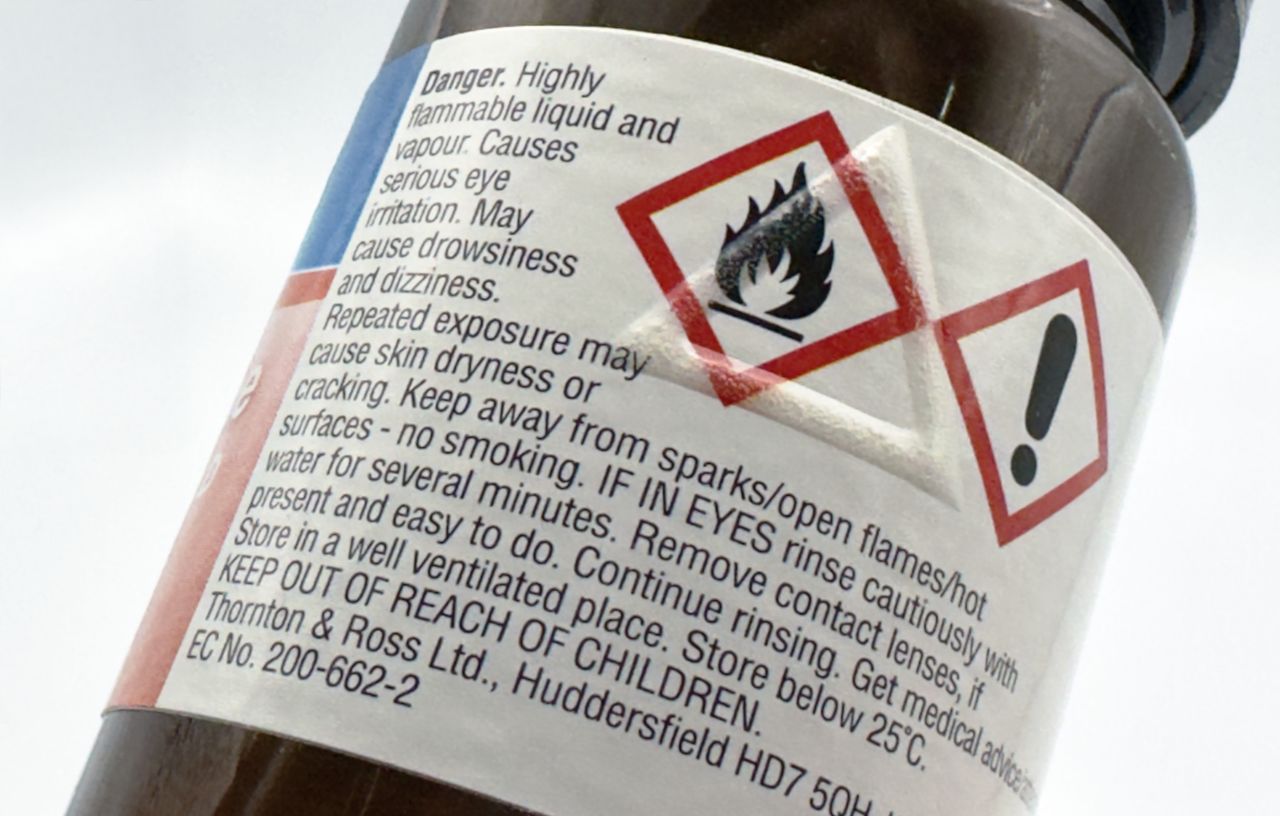
Precision in Print with High-Quality Braille Labels
As accessibility becomes a central goal in product design, high-quality Braille labels are one of the most effective ways to meet those targets and make packaging more inclusive. While accessibility is a key driver behind Braille labels, the success of any printed label ultimately depends on how well it is produced. In the UK, Braille is legally required on pharmaceutical packaging, but many other industries are beginning to recognise the value of integrating tactile elements into their labels for better customer care.
Understanding the Role of Braille Labelling
In the UK, approximately 20,000 to 30,000 people are active users of Braille. While this might seem like a small proportion of the population, Braille is essential for those who rely on it. It enables people to read independently, verify product names, and avoid dangerous mix-ups, particularly with medications or cleaning products. Products with labels featuring Braille can reach this audience and broaden their market appeal.
Legislation for Braille Labels in the UK
In the UK, Braille labelling is legally required for pharmaceutical products. Under Regulation 259 of the Human Medicines Regulations 2012, the name of the medicine must be displayed in Braille on the packaging, allowing blind or partially sighted people to easily identify their medication.
The Medicines and Healthcare products Regulatory Agency (MHRA) provides detailed guidance on this requirement. Their publication, "Medicines: Packaging, Labelling and Patient Information Leaflets," outlines the necessity for Braille labelling and emphasises that abbreviated Braille should not be used.
For non-medical products, there is currently no legal obligation to include Braille on packaging. However, organisations like the Royal National Institute of Blind People (RNIB) provide resources and guidance on producing Braille labels to promote independence for individuals who are visually impaired.
Furthermore, the UK Association of Accessible Formats (UKAAF) is responsible for regulating Braille code standards in the UK. In 2011, UKAAF adopted the Unified English Braille (UEB) code, which has since replaced the older Standard English Braille (SEB). UEB provides a standardised approach to Braille, maintaining uniformity among applications, including labelling.

Designing Braille Labels That Make a Difference
Creating Braille labels that are genuinely effective means paying attention to the right design features. To make Braille easy to read by touch, the height and spacing of the dots need to be just right. If the dots are too flat, they can be hard to feel, and if they’re spaced too tightly or too far apart, it can get confusing. That’s why following trusted standards, like the Marburg Medium, is important, as it helps keep things consistent, clear, and reliable for Braille readers.
Longevity
Braille dots must have the durability to retain their shape over time, even on products that are frequently handled or exposed to friction. This makes material choice especially important; labels printed on tougher substrates, such as polypropylene or laminated finishes, often perform better for long-term legibility.
Arrangement
Placement is equally as important when designing Braille labels. Braille should be positioned where it can be easily found by touch, typically near the top of a label or in a central location, so that users don’t have to scan the entire package. Clear areas should be left around Braille text to avoid confusion with other tactile elements or packaging features.
Where tactile warnings are included, they should be distinguishable from Braille. For example, a raised triangle that indicates a hazardous substance should not be confused with a Braille character; that’s why the most professional labels use adequate spacing and an intuitive layout design.
What Vista Labels Offers
At Vista Labels, we are at the forefront of this sector with our high-quality Braille and tactile labellingsolutions. Understanding that accessibility isn’t just a compliance issue, but an invaluable means of sharing your brand's message, we provide custom Braille label printing designed to meet legal requirements and attract a broader customer base.
Our Braille labelling process incorporates precise embossing techniques to ensure that the raised dots are easily legible by touch. These labels are produced to Marburg Medium standards, which define the spacing, height, and placement of Braille dots to maintain readability. Whether for stringent pharmaceutical packaging or a new brand looking to reach the visually impaired, we ensure that every label is produced with clarity and durability.
Tactile Labels
We don't just stop at Braille. We also include tactile warning triangles in our label designs for hazardous substances. Our Braille and tactile labels can be incorporated across various materials and finishes. Whether your product requires polypropylene for durability, glossy metallic finishes for shelf appeal, or a simple paper-based option for eco-conscious consumers, our flexible production methods can accommodate your brand’s goals without compromising accessibility.
Why Braille Labelling Matters for Brands
Including Braille and tactile labels shows that a brand genuinely cares about accessibility and values all its customers, including those with visual impairments. As people become more aware of inclusive design, adding features like Braille is not just a nice extra; it gives the message that a smart, responsible business made this product.
Plus, it can really boost a brand’s reputation. Shoppers are more likely to trust and stick with companies that think about everyone’s needs. Even when it’s not required, using Braille labels can help your product stand out, especially in high-traffic markets such as food, beauty, or personal care.
Setting the Standard for Braille Labels
Creating packaging that genuinely works for producers and consumers means thinking beyond the basics. Whether you’re legally required to use Braille or want your packaging to reach the widest audience possible, Vista Labels has the expertise to make it happen. As one of the UK’s first label printers to achieve PS9000 certification back in 2004, and with our PQG accreditation, we’re proud to uphold the highest standards in quality assurance and label printing reliability. Let us help you create Braille labels that truly make an impact. Contact our team today to discuss your Braille label project.